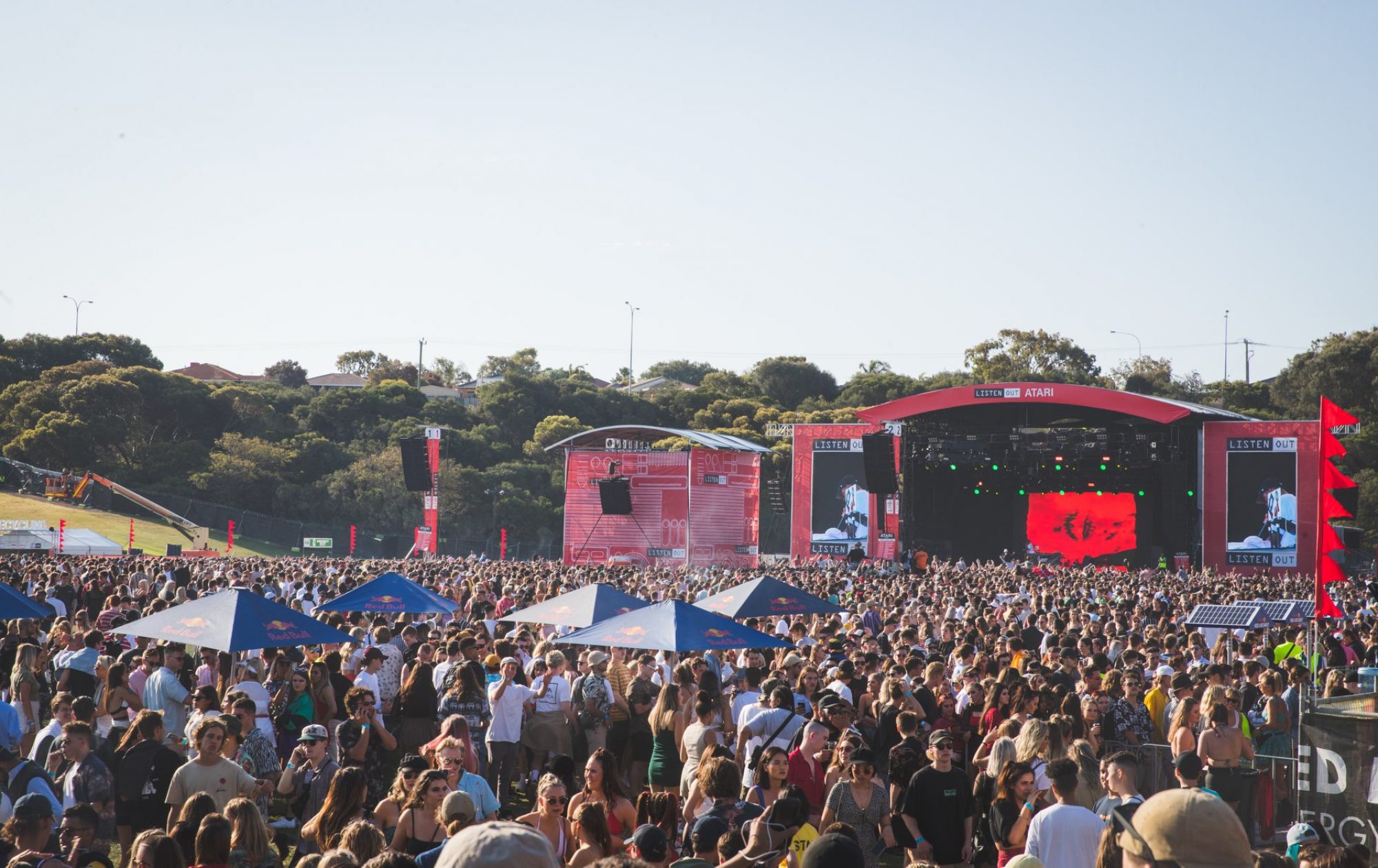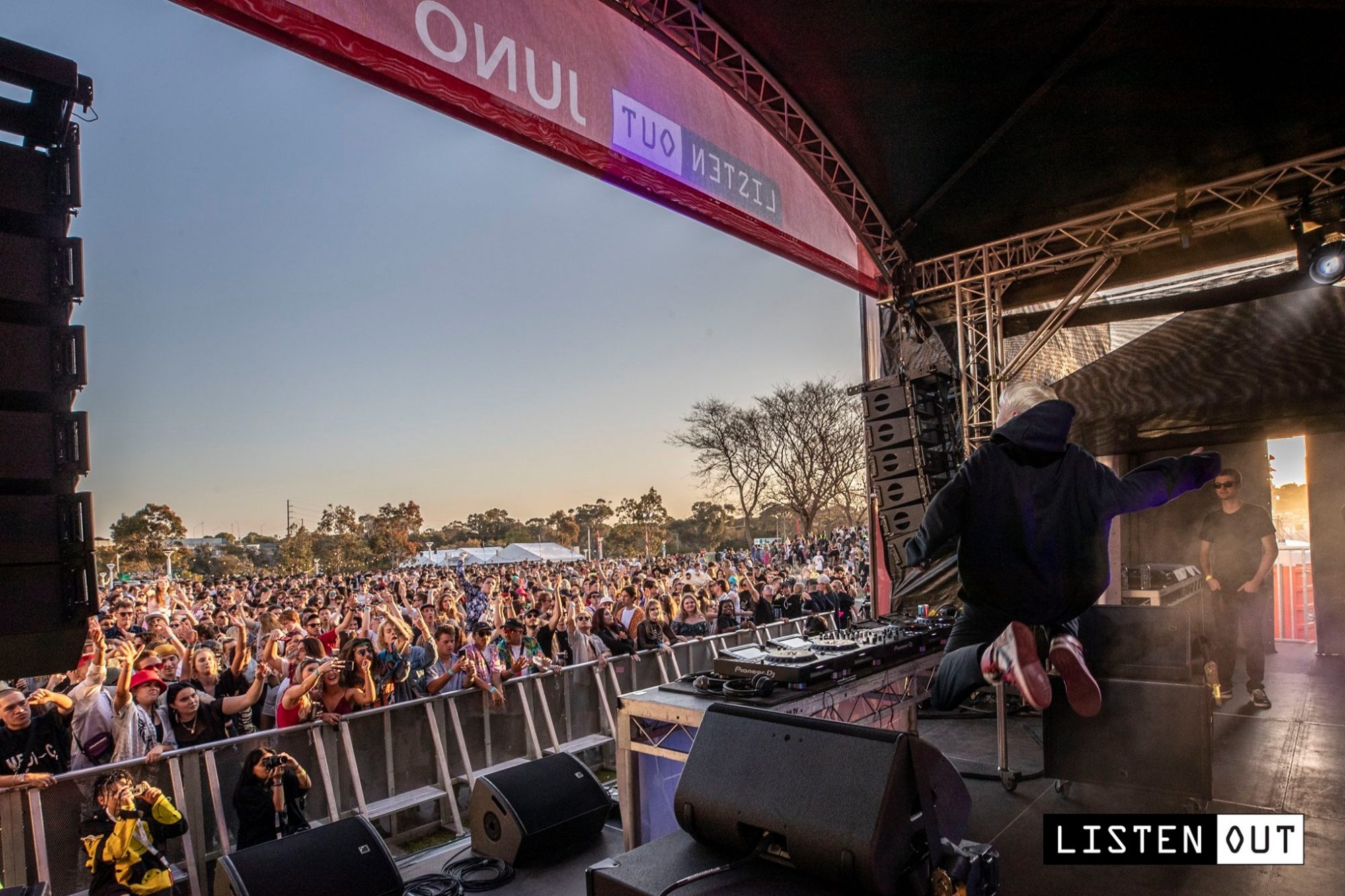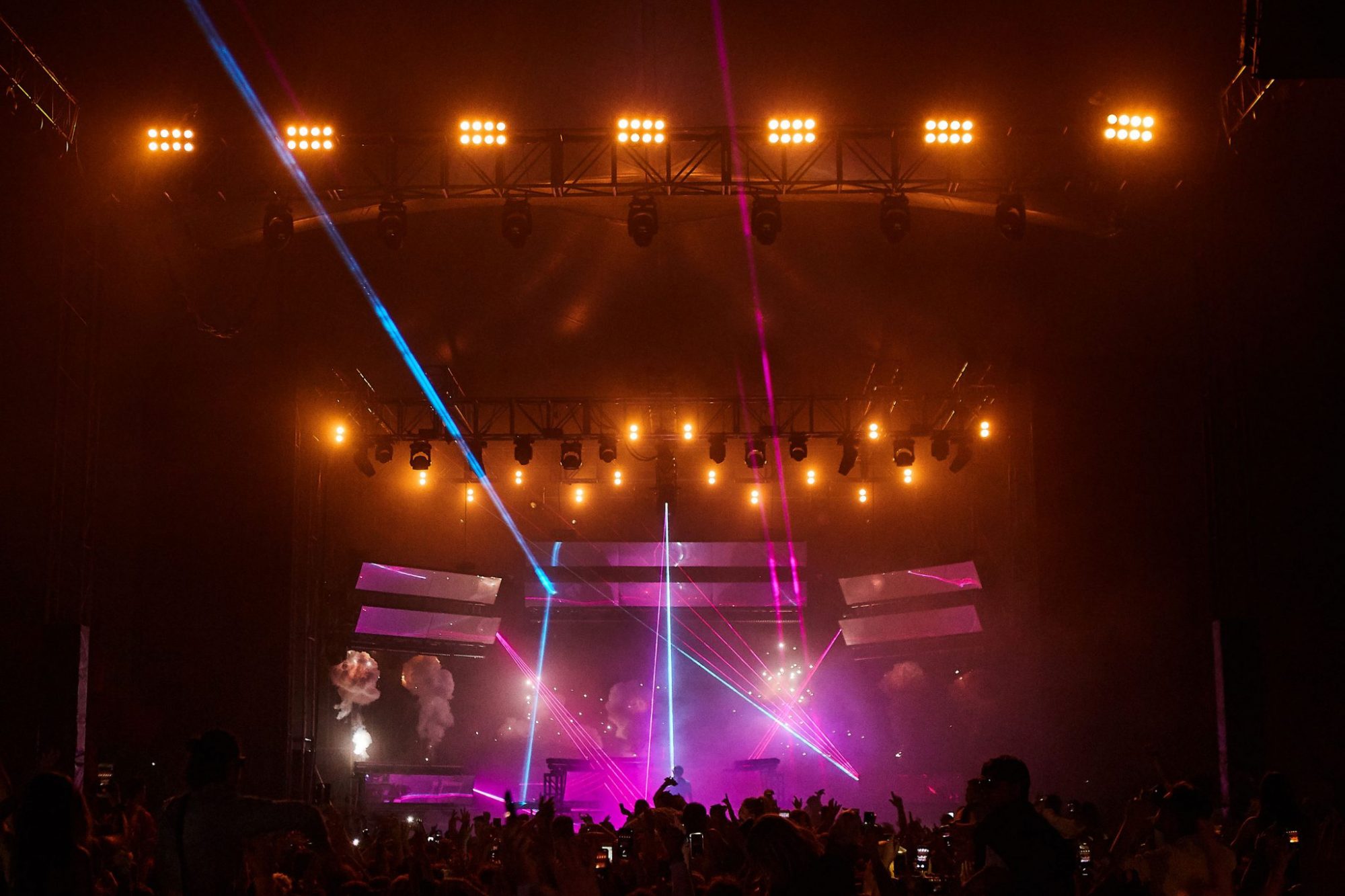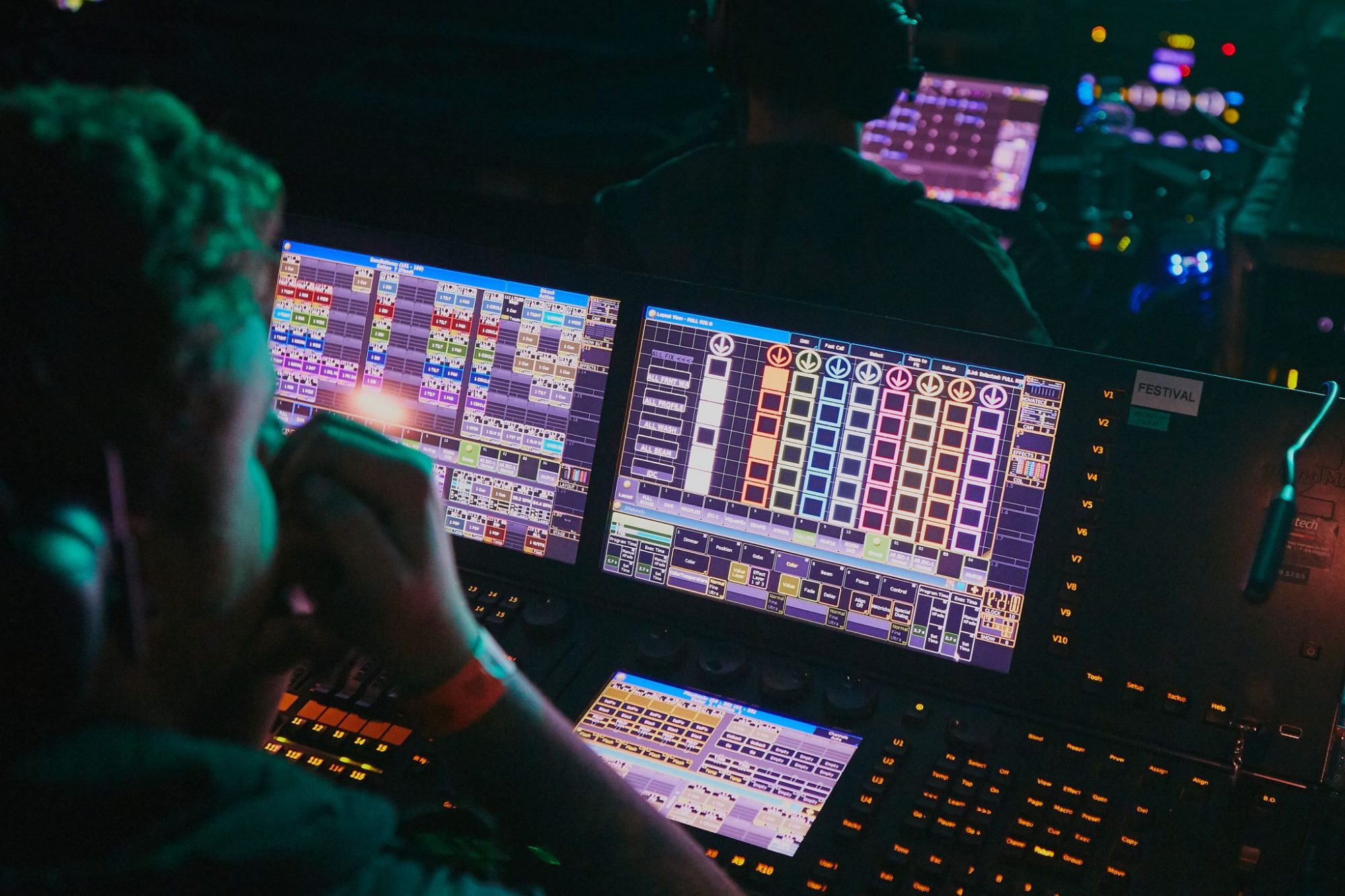Listen Out & Listen In Festivals
Now in its sixth year, dance music festival Listen Out and its stripped-down sibling Listen In has completed a triumphant tour of Australia and New Zealand, with sell-out crowds sweating it out with Aussie hero Flume, legendary US producer Diplo, and cult rapper JPEGMAFIA. 30,000 revellers packed Perth’s HBF Arena for Listen Out on 29 September, while a respectable 10,000 trekked to Adelaide’s Bonython Park on the 6th October for Listen In.
Novatech Creative Event Technology provided a full package of video, lighting, audio, and rigging to Perth’s Listen Out and Adelaide’s Listen In, which saw them fabricating custom stage carts and rigging elements based on designs originally created for Flume and Diplo in the USA. Novatech ensured the gear’s safe passage twice across the Nullarbor and designed their touring rigs to scale from the three stage Perth leg to the main stage only Adelaide leg.
In addition to supplying Flume’s spec of a 9.6m wide by 5.4 high LED screen of ROE LED CB5F panels, Novatech custom built eight rigging ‘pods’ that were flown above the main Atari stage, which held giant mirrors, lasers, Robe Robin BMFL Blades, Claypaky Sharpys, and GLP X4 Bar 20s.
“Flume’s spec was a monster of custom-built truss,” explains Dean. “Pods One and Three were 3.5m wide and weighed 280kgs just on their own. Pod Two was 6m wide and weighed 420kgs, also empty. All pods were built with wheels that meant they rolled out of the trucks, straight onto the stage. All elements were pre-loomed and cabled, but due to the stressful trip across the Nullarbor, we couldn’t risk leaving the lights pre-rigged. But having the pods built and cabled meant that from rolling these elements out of the truck, to firing up and testing in the air, we were ready within an hour in both Perth and Adelaide.”
Also headlining the main stage, Diplo’s show was just as challenging. “Diplo’s show utilised four carts, which we custom fabricated exactly to spec,” continues Dean. “They rode on a 1.2 x 2.4 metre stage deck, 300mm high at the bottom, and held ROE LED CB8 semi-transparent LED panels, 18 Claypaky Scenius Unicos, and nine GLP JDC-1s. They rolled onto stage with enough precision to lock every join of the LED panels, creating one seamless semitransparent wall.”
Custom stage design aside, the biggest challenge of tours like Listen Out/In is making the production affordable, portable, and scalable. Novatech’s internal processes include designating set ‘kits’ for audio, video, and lighting, which include standard packages and specs. The kit system allocates spares and failsafe’s and allows the tech crew to get things done safely and accurately.
The other key is staff education; each year, Novatech run weeks of basic, intermediate and advanced training across all disciplines, which every employee is exposed to. This not only covers the tech details of audio, video, and lighting, but essential skills in preparation and documentation using software like Vectorworks, and the personal skills of how to run a crew of techs on-site.
The success with which Novatech adapted the systems used in a stadium in Perth to a big top with stage in Adelaide is testament to their methodology. “Listen In Adelaide had very restricted stage real estate,” illustrates Dean. “Preparing for that started in Perth, where we packed gear in the trucks in specific orders. In Adelaide, we reorganised the show to have all rolling elements come from side stage instead of upstage. All of the headliner’s gear was in place when the crew arrived for pre-show setup. All Flume’s crew had to do was clip their custom mirrors onto our rig, and everything worked. They all had big smiles on their faces; gigs are often very different to that, and preparation is time well spent.”
This kind of thinking ahead starts way before the first truck is even packed; all systems are designed and labelled in Vectorworks, to the level of detail that staff print out stickers for each lighting fixture that state their location, DMX Universe, mode, wattage, and cabling details. This speeds up setup time and saves fault-finding, and Novatech use analogous processes for audio and video. All lighting floor packages for each act on Listen In/Out were cabled and live during the whole gig, meaning LDs could come to the lighting desk and test their show at any time during the day, providing peace-of-mind and excellent service.
Listen In and Out – The Gear – Stage by Stage
Listen Out’s three stages were named for legendary electronic music production tools; the main Atari stage for the Atari ST computer, the smaller 909 stage for the Roland TR-909 drum machine, and third Juno stage for the Roland Juno series of synthesisers. All three ran lighting, video, and audio from Novatech.
Atari
Atari’s PA rocked 12 elements of L-Acoustics K2 line array per side, underhung with four elements of L-Acoustics Kara. Two outfill hangs of six K2 were supplemented with eight Kara as infill and three delay hangs of four K2 each. The all-important sub bass was handled by 24 L-Acoustics SB28s. A DiGiCo SD10 and an Avid Profile were provided at FOH, with a DiGiCo SD10 and Avid SC48 available at monitor-land.
Atari’s lighting and video rig, in addition to the massive ROE LED screen, pods, and carts, also packed in Claypaky Sharpys and Claypaky Sharpy Plus, Martin MAC Viper Profiles, Martin MAC Quantum Washes, Arri Mini Flood 1000s, and a host of Molefays.
909
The 909 stage’s PA was graced with 10 elements of L-Acoustics K2 a side, with two elements of Kara underhung, pumping the lows with 12 SB28 subs. The lighting rig sported Prolights Diamond 7s, Martin MAC Viper Profiles, MAC 700 Profiles, Martin Atomic 3000s, and PixelLine 1044 RGB battens.
Juno
The Juno stage ran audio with an elegant six elements of L-Acoustics Kara per side, with two elements of L-Acoustics ARCs used as fill. Four SB28s took care of the bottom end. Juno’s lighting rig utilised Claypaky Sharpys, PixelLine 1044s, Claypaky Sharpy Wash 330s, and SGM XC-5s, rounded out with 2Lite DWEs.




